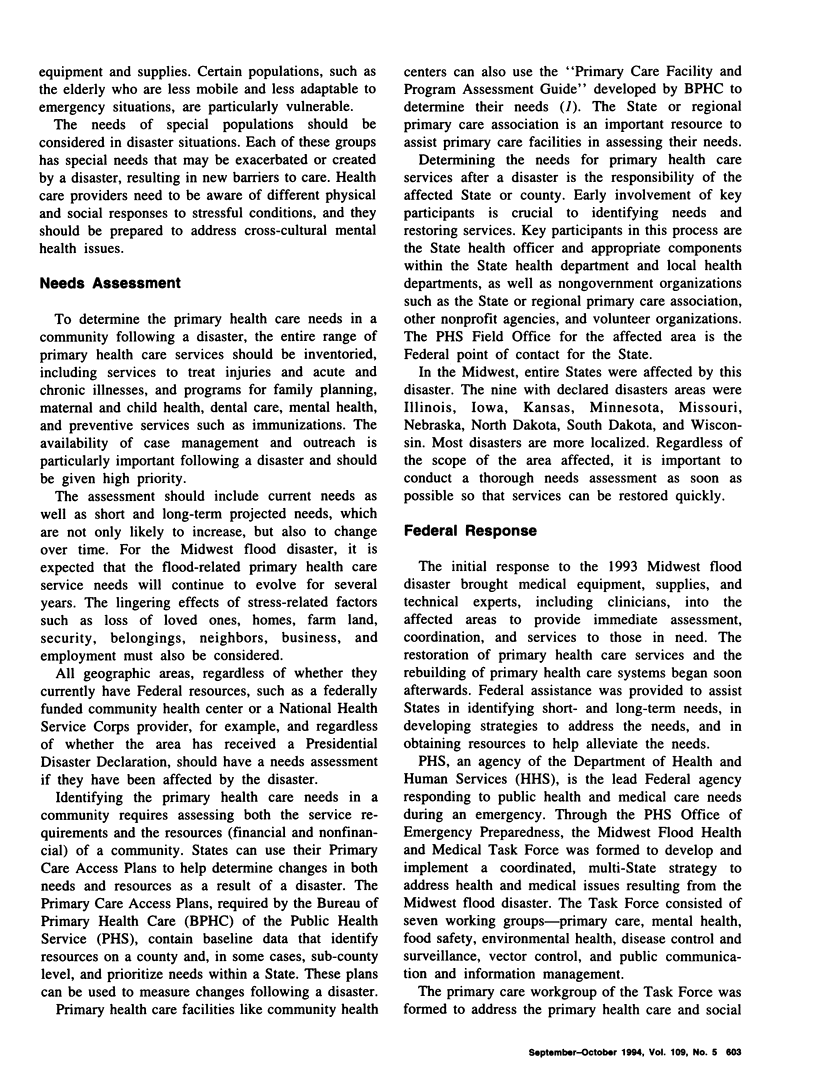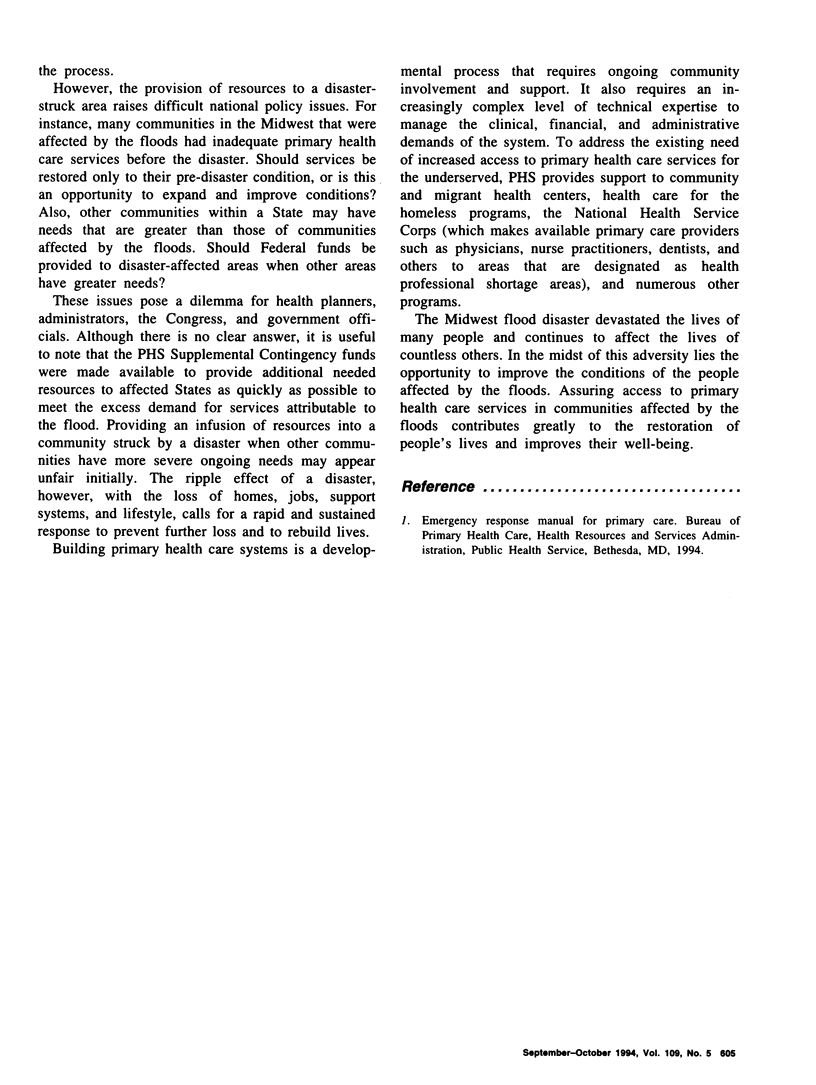Abstract
The Midwest flood disaster of 1993 ravaged communities across a 9-State area. Homes were destroyed, roads closed, and services disrupted. Economic costs, including loss of revenue from farming and loss of jobs, are estimated at more than $1 billion. Even as people continue to rebuild their lives 1 year later, renewed flooding has occurred in some areas. A community-based primary health care system can be described as a system of services that (a) offers all members of a family continuous, comprehensive, quality health services throughout their lives; (b) includes case management and coordinated referrals to other related services when necessary; (c) is usually provided by family practitioners, general internists, general pediatricians, obstetricians-gynecologists, nurse practitioners, certified nurse midwives, and physician assistants; and (d) has community involvement in the development and management of the system to assure that it meets the changing needs and the diversity of the people it is designed to serve. This paper uses the floods to describe the impact of a disaster on primary health care services and primary health care systems. This includes changes in the demand for services (as evidenced by the frequency and type of patient visits) and the ability of the system to respond to these changes. The effect of a disaster on access to primary health care is discussed.
Full text
PDF






